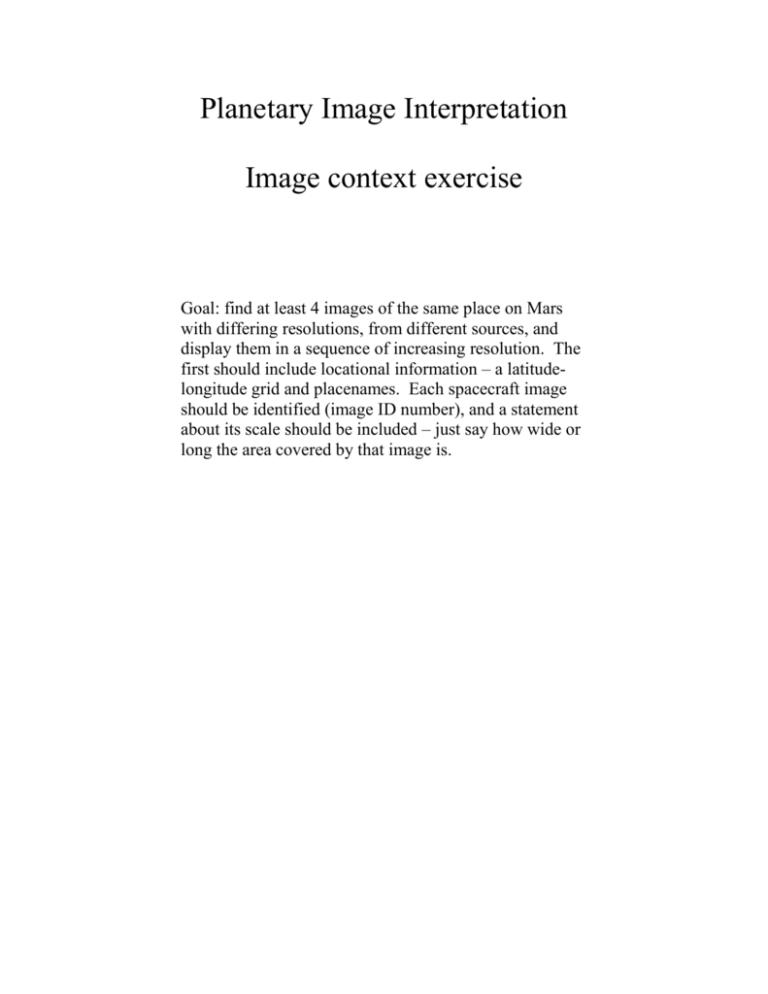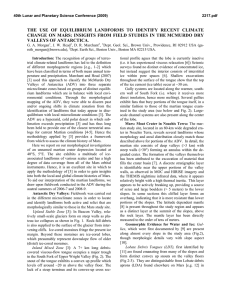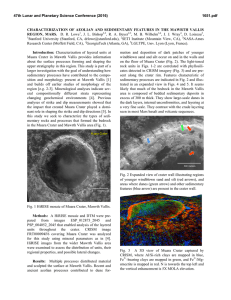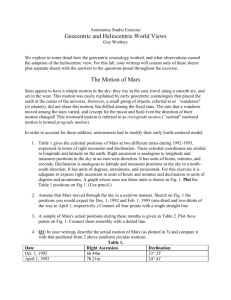Planetary Image Interpretation
advertisement

Planetary Image Interpretation Image context exercise Goal: find at least 4 images of the same place on Mars with differing resolutions, from different sources, and display them in a sequence of increasing resolution. The first should include locational information – a latitudelongitude grid and placenames. Each spacecraft image should be identified (image ID number), and a statement about its scale should be included – just say how wide or long the area covered by that image is. Fig. 1. Map from Map-a-Planet, using a Viking Orbiter mosaic as background. One degree spans 60 km. The map area is 600 km wide. The box shows the location of Figure 3. Fig. 2. Placenames in the study area, taken from the Planetary Nomenclature website at USGS Flagstaff. Fig. 3. Viking image 451S11, about 60 km top to bottom. The box shows the area of Figure 4. The large valley is Labou Vallis. Fig. 4. Mars Odyssey THEMIS visible image V01966001, 18 km across. The boxes show the areas of Figures 5 and 6. Fig. 5. Detail of Figure 4 showing the full resolution of the image. The detail is about 13 km wide. The valley is Labou Vallis. Fig. 5. (Left) Mars Global Surveyor MOC image S0701523, 3 km wide. The box shows a section of the image enlarged at right. (Right) Detail of the MOC image. The box identifies the area of Figure 6. Fig. 6. Detail of Mars Global Surveyor MOC image S0701523, 1.5 km wide. Small landslides on the north wall of Labou Vallis.











